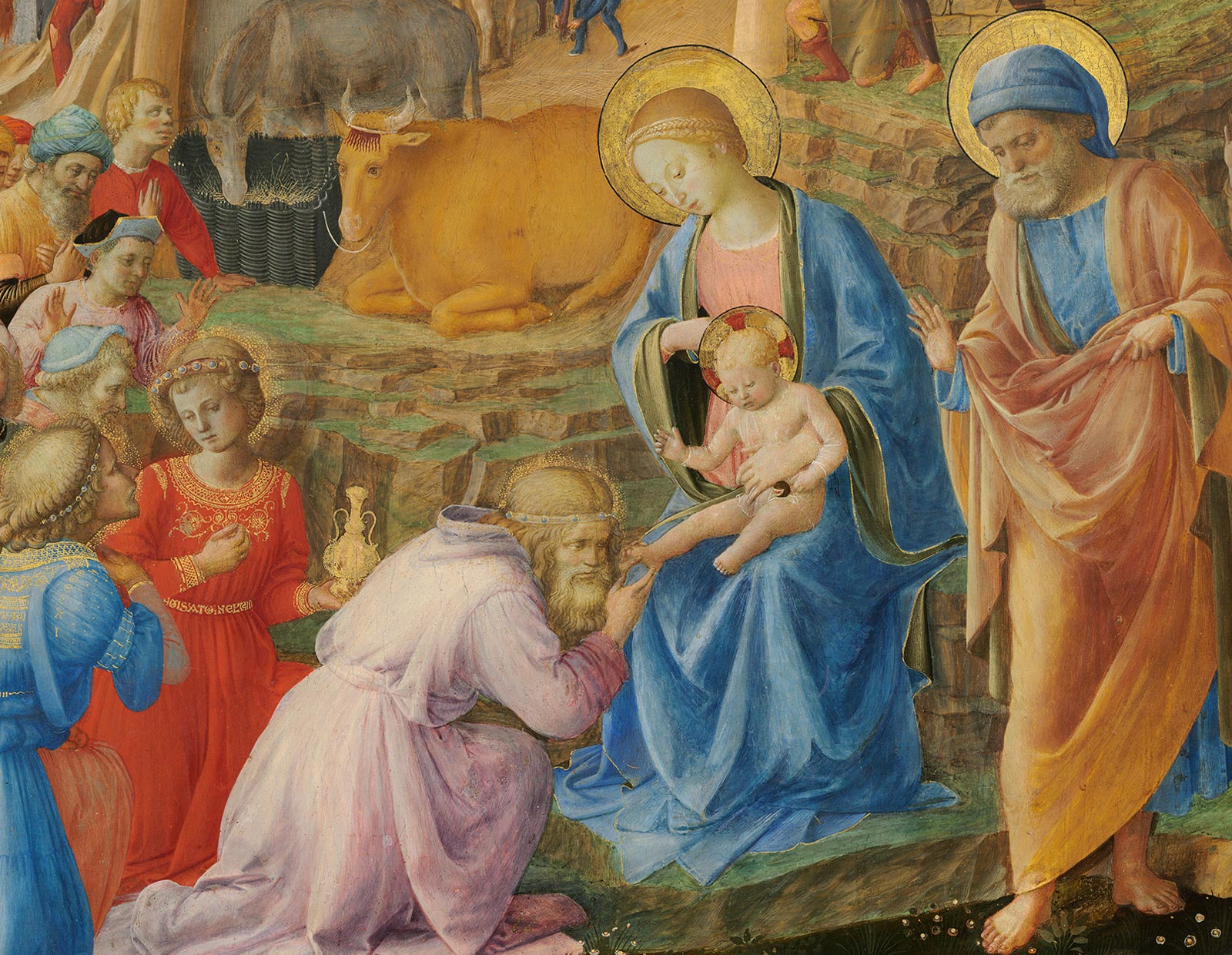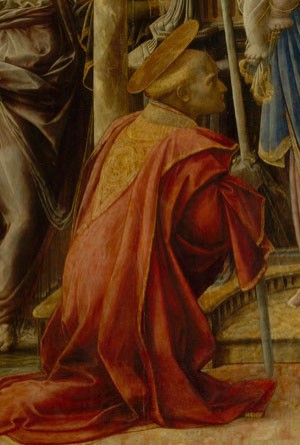Baptized as Guido di Piero, the artist we know today as Fra Angelico took the name Fra Giovanni when he entered the Dominican order some time between 1417 and 1425 at Fiesole, near Florence. It was not until the 19th century that he was routinely called Fra Angelico, from an early epithet, pictus angelicus (angelic painter). The description, it seems, was apt, for both his art and his character. Giorgio Vasari wrote of him in the 16th century: “It is impossible to bestow too much praise on this holy father, who was so humble and modest in all that he did and said and whose pictures were painted with such facility and piety.” The artist, who was offered but refused the position of Florence’s archbishop, was formally beatified in 1982 by Pope John Paul II.
Little is known of Fra Angelico’s early life, but it seems that he and his brother worked in a scriptorium, Fra Angelico as an illuminator, his brother as a scribe. Fra Angelico’s paintings on panel share the luminous color and delicacy of manuscript illustrations, and he continued to model forms with color and light rather than the shadows of chiaroscuro. His works have exceptional naturalism, and he employed perspective in innovative ways to create convincing architectural settings. Fra Angelico’s figures convey deep human sentiment that was a natural expression of his own piety. Although many of his greatest works were made for religious patrons, especially his own order, his plentiful clientele also included the Medici and other powerful Florentine families. By the 1430s he was running Florence’s largest and most sought-after workshop. He exerted a significant influence on other artists, including Filippo Lippi, before he was called by the pope in 1445 to work in Rome. He also completed commissions in Orvieto and Perugia, and served as the prior of the convent in Fiesole between 1450 and 1452. He died in Rome in 1455.
Filippo Lippi was born around 1406 in Florence, one of many children of an impoverished butcher. Orphaned at a very young age, he and a brother were sent to the Carmelite monastery; Filippo may have been as young as eight. In 1421, he took the vows of a Carmelite monk, entering a religious life for which he was wholly unsuited. Next to nothing is known about his training as an artist, but it must have been within the monastery. He apparently showed early talent: Giorgio Vassari, the 16th-century artist and biographer, reported that Filippo’s schoolmasters found him doodling instead of working at lessons, filling his notebooks and those of fellow students. During 1424 and 1425, he would have been in position to study firsthand a series of groundbreaking frescoes being completed in the Brancacci chapel of the Carmelite church. These innovative works by
Filippo was among the first Italian painters to be influenced by Netherlandish artists, whose paintings were brought south by Italian bankers and merchants with business in the north. Not only did Filippo respond to the Netherlandish artists’ highly detailed and realistic portrayal of surfaces—from crystal vases to richly brocaded fabric—he was the first Italian painter to adopt the northern practice of depicting the Virgin and Child in the domestic settings of contemporary life. Filippo was also among the earliest Italian painters to create independent portraits, perhaps, again, following models from the north. From the 1440s, his work was increasingly influenced by the more delicate and refined style of his contemporary Fra Angelico.








